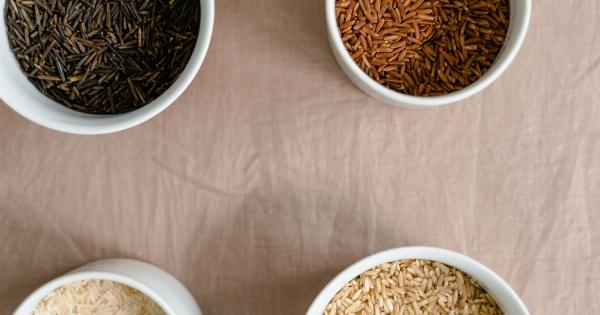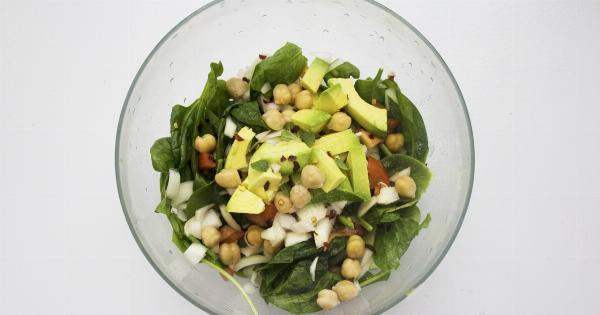When it comes to fruits, there are two broad categories: fresh and dried. Fresh fruits are those that are picked from the tree or vine and consumed immediately, without any processing or preservation.
Dried fruits, on the other hand, are fruits that have been dehydrated, either naturally or through artificial means, to remove most of their water content. This process makes them smaller, denser, and easier to store and transport, but it also affects their nutritional content and value. In this article, we will compare fresh and dried fruits nutritionally and explore which is better for your health.
Nutritional Value
Fresh fruits are known for their high nutritional value, as they are rich in vitamins, minerals, fiber, and antioxidants. They are also low in calories, fat, and sodium, making them an ideal addition to any diet.
Some of the most nutrient-dense fresh fruits include berries, citrus fruits, kiwi, pineapple, and watermelon. These fruits are packed with vitamin C, folate, potassium, and other essential nutrients that are vital for good health.
On the other hand, dried fruits have a more concentrated nutritional profile, as their water content is removed during the drying process. This means that they contain more fiber, antioxidants, and minerals per serving than fresh fruits.
However, this high concentration also means that dried fruits are often higher in calories and sugar, as the sugars in the fruit become more concentrated when the water is removed. Some popular dried fruits include raisins, prunes, dates, and apricots, which are all rich in fiber, iron, and potassium.
Fiber Content
Fiber is an essential nutrient that plays a crucial role in digestive health, weight management, and disease prevention. Both fresh and dried fruits are excellent sources of fiber, but they differ in the amount and type of fiber they contain.
Fresh fruits are generally high in insoluble fiber, which adds bulk to the stool and promotes regular bowel movements. Some examples of high-fiber fresh fruits include apples, pears, bananas, and raspberries.
Dried fruits, on the other hand, are high in both insoluble and soluble fiber, which can help lower cholesterol levels, improve blood sugar control, and promote satiety.
However, it is important to note that dried fruits are often higher in total fiber than fresh fruits, but they may be lower in insoluble fiber due to the loss of water during the drying process.
Nutrient Density
Nutrient density is a measure of how many nutrients are packed into a food per calorie.
Fresh fruits are generally considered to be more nutrient-dense than dried fruits, as they are lower in calories and higher in micronutrients like vitamins and minerals. For example, a cup of fresh strawberries contains only 49 calories but provides 150% of the daily recommended intake of vitamin C, as well as other essential nutrients like folate and potassium.
Dried fruits, on the other hand, are more calorie-dense than fresh fruits, as they have a lower water content and a higher concentration of natural sugars.
For example, a quarter cup of raisins contains 120 calories, compared to only 30 calories in a cup of fresh grapes. However, dried fruits are still considered to be a healthy snack option, as they are rich in fiber and other essential nutrients like iron and potassium.
Sugar Content
Sugar is a controversial nutrient that has been linked to a variety of health problems, including obesity, type 2 diabetes, and heart disease.
Both fresh and dried fruits contain natural sugars, but dried fruits are often higher in total sugar due to the concentration effect of the drying process. For example, a cup of fresh apricots contains 11 grams of sugar, while a quarter cup of dried apricots contains 23 grams of sugar.
It is important to note, however, that the sugar in fresh and dried fruits is different from the added sugars found in processed foods and drinks.
The natural sugars in fruits are accompanied by a variety of other nutrients, such as fiber, vitamins, and minerals, that provide numerous health benefits. Therefore, it is recommended to choose fresh or dried fruits as a healthy snack option over processed foods that are high in added sugars.
Conclusion
In conclusion, both fresh and dried fruits have their own unique nutritional benefits and drawbacks. Fresh fruits are generally more nutrient-dense and lower in sugar and calories, while dried fruits are more concentrated in fiber and micronutrients.
Therefore, the answer to which is better for your health depends on your individual needs and preferences. It is recommended to consume a variety of both fresh and dried fruits as part of a balanced diet to maximize your nutrient intake and promote overall health and wellness.





























